Palindrome: skin-on-frame proa for the R2AK
A few days after the start of the R2AK I was biking around Point Hudson Marina to see what I might see, and decided to duck into a grassy field behind the RV lot when I ran into a proa! I skidded to a stop and pointed at the boat, “That’s a proa!” I cleverly exclaimed. The young man who was doing something on the boat stopped what he was doing, smiled and affirmed “Yes, it is!” That’s how I met Dillon Majoros, the owner, designer and builder of one of the nicest proas I’ve ever seen. Being the editor of Proa File I’m fairly well connected to the proas of the world, so it was a real shock to discover this rarest of rare breeds sitting literally in my own backyard. How did it happen?
Dillon had entered the full race with two of his friends. From their base in Florida they designed a boat, then pooled their pennies to build it and buy a school bus to get them and their boat to Port Townsend. With a week to go the two friends bail out, but Dillon perseveres, even through his bus breaking down in Montana, even through getting to Port Townsend with a half finished experimental boat on the day before the race was to start. He stayed up all night, twice, trying to get the boat put together and at 5am on June 4th, Dillon took a hard swallow and decided to opt out of the challenge. There were just too many things pointing him towards “no.” ~NW Maritime Center newsletter
Palindrome was designed to be “the most boat we could get for the money”, says Dillon. The 30’ LOA, 400 lb. canoe is a creative blend of skin-on-frame hull construction with stitch-and-glue epoxy/plywood. The SOF hull is so light it practically floats in air, let alone water. Dillon said the wood frame and nylon hull was the quickest part to build - no sanding! Above the hull stretches a ply/epoxy deck cabin that acts like the stiffening spine of a vertebrate, giving the flexible hull the stiffness it needs to handle the loads of the sailing rig. The beams and ama are also ply/epoxy.
The boat currently sports a crab claw rig made from a cut down Hobie 16 mast, bamboo yards and a 195 sq. ft. Tyvek® polyethylene sail. Shunting is quick and easy (for a proa) thanks to a clever system of blocks and tackle that pull the yard from “old bow” to “new bow” in a few seconds, with the mast tilt and stays automatically adjusting. Nice!
Leeway prevention is handled by a single “weather” board in the center. The board pivots fore and aft to adjust the CLR and to avoid damage in groundings. You can see Dillon’s Florida experience there. Steering is by quarter-rudders, which also flip up. Only one rudder (aft) is used at a time. The rudders work well and Dillon reports that steering the boat is a single-finger affair, however he’s having a bit of trouble keeping them properly attached.
Originally the canoe was designed and built with a central junk rig and two counter-rotating rudders fore and aft. Dillon didn’t elaborate but he said he wasn’t happy with it, so they scrapped it and went with the crab claw. He’s happy with the way it handles now, and says “the boat is becoming more and more Polynesian as it goes”.
He’s still here in Port Towsend, the NWMC hired him! He’s still heading for Alaska, and works on the proa after hours. He’ll be heading off in a few days, rudders willing. In a way it was a good thing that Dillon didn’t make the start. He may have lost the race, but the little “Victorian Seaport” won a new resident - he’s decided to come back and make PT his home.
“Make that one 25 year old win for the R2AK’s goal of attracting young people to town. Go team!” ~Jake Beattie

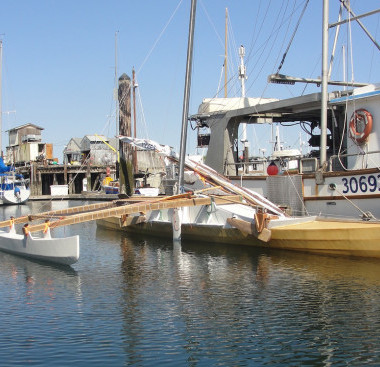
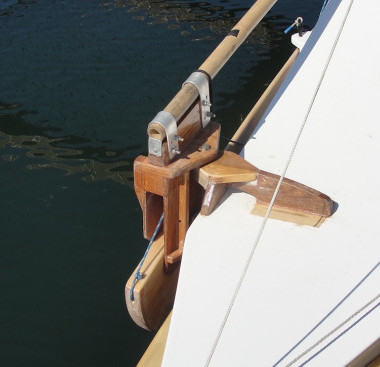
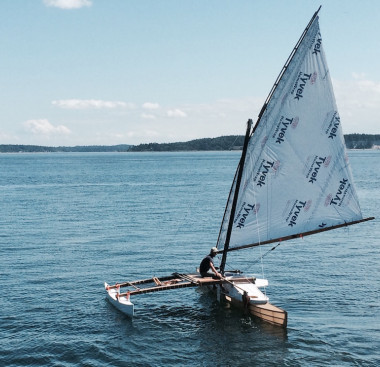
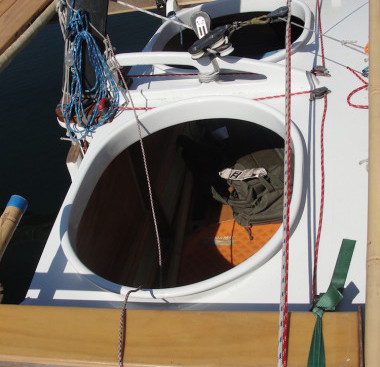
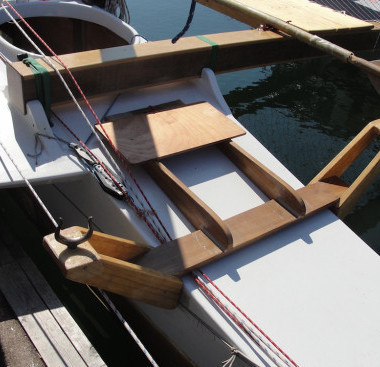
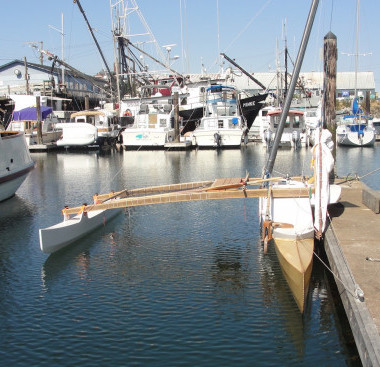
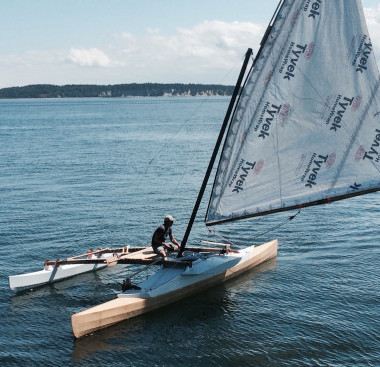


A wonderful discovery and a great looking proa! Some information about Dillon’s original R2AK entry can be found at http://r2ak.com/registered-participants/#toggle-id-29, with a large photo of the partially built craft being located at http://r2ak.com/wp-content/uploads/2015/03/poop.jpg